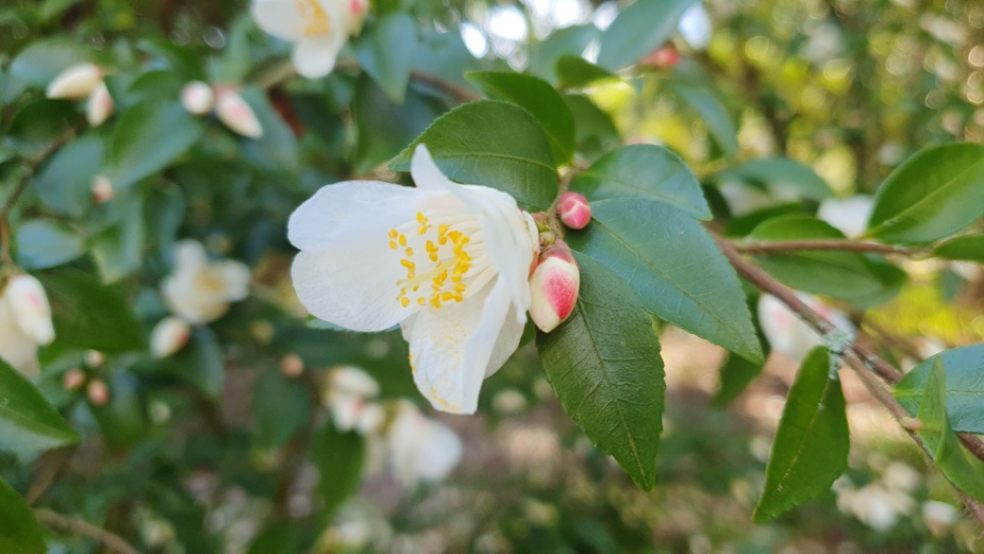
"Mexican wave of colour” expected after cold snaps delay blooms, as National Trust launches its annual blossom campaign
The National Trust is today (Monday 20 March) launching its annual blossom campaign, which aims to bring the beauty of blossom to more people and to celebrate the start of spring.
However, due to repeated cold snaps particular in recent weeks and the driest February in thirty years, Britons may need to wait a little longer than usual to be able to enjoy nature’s most beautiful displays, as cold temperatures, wind and snow lead to difficult conditions for flowering trees and hedgerows across England, Wales and Northern Ireland.
Fortunately, the British public should not have to wait long for nature to give its great show of blossom, as a milder and wetter April should counteract the past dryness and the snow is unlikely to have any effects on the beauty of blossom once the trees are in full flower.
Andy Jasper, Head of Gardens and Parklands at the National Trust said: “A number of factors can influence the timing of the emergence of blossom, temperature being the principal one. While we had a mild winter overall, the recent cold snaps have affected how quickly nature progresses, and we can see the effects of this across many of our gardens with blooms delayed.
“Luckily, snow doesn’t generally affect the blossom in the long run – it’s late frost that can really impact the display of blossom, fruiting and harvests – and the cold snap has happened before the buds have tried to bloom in most cases, so we are still in line for a truly incredible show where the delayed blossom will burst forth in waves across the country like an amazing Mexican floral wave – marking the reassuring moment that spring has arrived.
“I hope that when temperatures start rising again, the National Trust’s blossom campaign will play a part in encouraging everyone to take ten minutes to step outside and to really stop and look at the new life bustling all around us, as it greatly enriches all of our lives.”
Despite many blooms being on ‘pause’, gardens in the south-west appear to be bucking the trend, remaining a haven for early blossom. Cornish gardens in particular have been largely unaffected.
At Glendurgan Gardens near Falmouth in Cornwall, the gardens’ famous magnolias are in full bloom, putting on a particularly spectacular show as some species have bloomed later than usual while others have been early, condensing their blossom into one big simultaneous flowering this year. Alongside a camellia walk bursting with colour and flowering rhododendrons, they are forming a spectacular mosaic of colour for visitors to enjoy.
However, even in Cornwall the start of spring has seen a few isolated incidences of weather damage. At Trengwainton Garden, known for its 50 varieties of gigantic magnolias – the recent strong winds have caused damage to one of its largest trees, Magnolia Campbellii, in the walled garden which is 102 years old, causing many of the delicate petals to drop prematurely.
Tom Cutter, Assistant Head Gardener for the National Trust at Glendurgan in Cornwall said: "We are very fortunate that the valley here at Glendurgan protects our magnolias from the worst of the winds – others, like Trengwainton, who do not have valleys themselves have suffered the effects a lot more as the winds wrought havoc on their magnolias’ blossom.
“Also, thankfully, due to Cornwall’s unique microclimate, we haven’t been hit as badly by the recent cold snap and snow as the rest of the country has been – and as a result, our visitors get to enjoy an utterly beautiful display of magnolias in our garden right now."
As part of the blossom campaign, the National Trust will encourage the UK public to explore and enjoy blossom and share spring impressions on social media with the hashtag #BlossomWatch. #Blossomwatch is part of a long-term campaign to return blossoming trees to our landscapes and create a UK equivalent of Japan’s ‘hanami’, the popular traditional custom where people of all generations get involved in enjoying the transient beauty of cherry blossom from March until May.
The conservation charity will also continue its work to bring blossom back to landscapes across England, Wales and Northern Ireland, by planting four million blossoming trees, including several new traditional orchards which have recently been planted at Brockhampton in Herefordshire, Bateman’s in Surrey, Arlington Court in Devon and Carrick-a-Rede in County Antrim. These tree plantings will help contribute to the charity’s commitment to plant and establish 20 million trees by 2030 to help tackle both the climate and nature crises.
Throughout spring, the Trust’s Festival of Blossom will additionally take place at over 100 locations across England, Wales and Northern Ireland with unique blossom-themed events and activities, including sessions with artists, picnics, games and special blossom walks to encourage visitors to explore and enjoy blossom.
For more information about the blossom campaign and the National Trust’s work around lost blossom can be found visit: www.nationaltrust.org.uk/our-cause/nature-climate/nature-conservation/how-were-bringing-blossom-back













